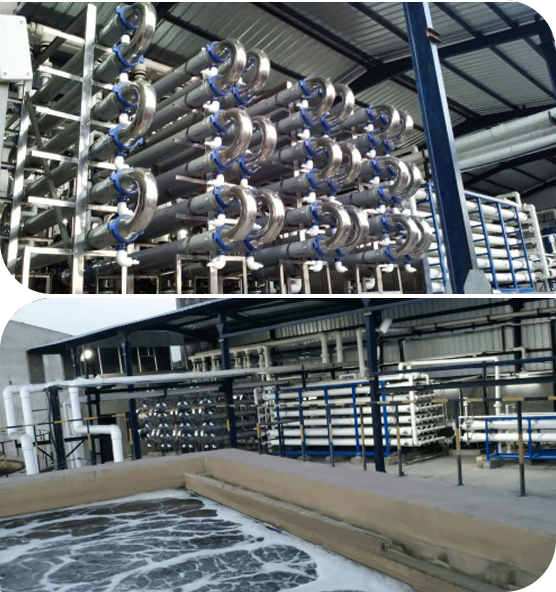
Waterman Engineers Australia is amongst the leading makers of Zero Liquid Discharge method. A ZLD system can be a remedy process which happens to be employed to remove every one of the liquid waste from a system. The purpose of ZLD water treatment method is to lower wastewater economically and deliver potable drinking water that's in good shape for standard use. Zero discharge method is a sophisticated treatment method method that comprises ultrafiltration, reverse osmosis, evaporation and fractional electro deionization. And we are a well-recognized supplier of ZLD devices.
In many Industries, for instance energy, oil & gasoline, substances, mining and Some others, a large amount of wastewater is produced that should be managed. Conventionally, this discharge of wastewater is completed by using a plant outfall to the area water entire body like an evaporation pond, or in some instances deep properly injected. These tactics produce lots of environmental issues by the public in lots of locations of the whole world, as h2o is usually a scarce source and its administration ought to be monitored. These issues have resulted from the establishment of ZLD procedures by quite a few industries to reduce their environmental footprint and improve sustainability. And, Waterman Engineers Australia are most effective ZLD suppliers yow will discover for This method.
PROPERTIES OF ZERO LIQUID DISCHARGE Procedure
The Attributes of a Zero Liquid Discharge method could vary according to the specific style and design and engineering employed. Even so, some common Qualities of ZLD units incorporate:
Water Conservation: One among the primary aims of ZLD devices is to conserve water by minimizing the discharge of liquid squander in the ecosystem.
Superior Drinking water Purity: ZLD programs are meant to develop large-high quality drinking water which is absolutely free from impurities and contaminants, which makes them appropriate for use in many industrial procedures.
Flexibility: ZLD techniques tend to be made to support a wide number of input liquid streams, which makes them versatile and ideal for use in numerous industries.
Innovative Wastewater Procedure: Zero liquid discharge methods use Highly developed wastewater treatment method strategies to take away impurities and contaminants from your effluent, producing high-high-quality water.
Squander Reduction: ZLD units enable decrease squander by decreasing the volume of liquid waste that needs to be disposed of and by producing a concentrated, good waste material that may be safely disposed of.
Electricity Effectiveness: ZLD devices is often Power-intensive due to the higher Electrical power needs of evaporation as well as other wastewater remedy procedures. Having said that, advances in engineering are generating Zero liquid discharge techniques extra energy-economical and value-successful.
Waterman Engineers Australia manufactures Zero Liquid Discharge (ZLD) devices created to remove all liquid waste, aiming to provide potable drinking water and decrease environmental impact. Their ZLD systems typically include ultrafiltration, reverse osmosis, evaporation, and fractional electro deionization. Crucial systems applied are Falling Movie Brine Concentrators, Zld System Manufacturer Zero Liquid Discharge System Forced Circulation Crystallizer, and Many others, which has a two-move strategy of pre-concentration and evaporation/crystallization to Get well and reuse water. These methods are adaptable to various industries, emphasizing water conservation, substantial water purity, waste reduction, and Electricity effectiveness. Technological specs are various and customizable, considering components like drinking water resource, move charge, and feed drinking water high-quality.
The need for Zero Liquid Discharge (ZLD) programs arises within the necessity to deal with environmental issues linked to h2o scarcity and air pollution. In industries like electricity, oil & gasoline, and mining, huge quantities of wastewater are produced. Usually, this wastewater is discharged into bodies of water, leading to pollution and depleting clean up h2o methods. ZLD programs goal to minimize these impacts by managing and recycling wastewater in just the commercial approach, therefore conserving h2o, cutting down waste, and endorsing sustainability.
When it comes to the technical technical specs of a Zero Liquid Discharge (ZLD) process, essential facets to target incorporate the drinking water source it'll treat, the system's move charge, the quality of feed h2o, the stages of treatment method included, the Restoration charge of drinking water, approaches for concentrate disposal, resources of construction, functioning conditions, and procedure automation and Regulate. These components ensure the system's effectiveness, longevity, and efficiency in managing and recycling industrial wastewater.
Zero Liquid Discharge (ZLD) plants provide Advantages such as drinking water conservation, squander reduction, and air pollution prevention, contributing to environmental sustainability. They are relevant in industries like energy generation, oil and fuel, chemical substances, and mining, in which they assist in controlling industrial wastewater effectively, lowering the ecological footprint, and complying with strict environmental regulations. These techniques are important in locations experiencing h2o scarcity and for industries aiming to improve their sustainability and operational efficiency.
FAQs for the Zero Liquid Discharge (ZLD) procedure frequently deal with its operational principles, Expense-performance, servicing requirements, environmental effect, applicability across different industries, and regulatory compliance. These queries help customers have an understanding of the technique's Added benefits, specialized needs, and suitability for their distinct wastewater management demands.
1. Zero Liquid Discharge (ZLD) can be a wastewater cure approach created to get rid of all liquid squander.
2. The method's factors are motivated by the particular industrial process, wastewater composition, and regulatory prerequisites.
3. Effluent treatment method vegetation remove pollutants from textile effluents to stop environmental contamination.
4. Advantages incorporate drinking water conservation, pollution reduction, and regulatory compliance.
five. The intention is to minimize environmental effect by recycling water and minimizing squander.
six-9. Effluent procedure crops are levels in wastewater therapy: Major (Bodily separation), secondary (biological treatment method), and tertiary (advanced therapy).
ten. Device functions include things like filtration, sedimentation, Organic treatment method, and disinfection.
11. Restricting parameters are factors that impact the remedy's efficiency, like pH and contaminant focus.
12. Design and style factors incorporate movement level, effluent composition, and ideal top quality of handled drinking water.